Eat Whole, Single-Ingredient Foods
Food scientists have discovered that eating whole, single-ingredient foods results in the body burning more calories than it would if you ate processed foods. An apple is an example of a whole food, but not all apples are created equal. Some are packed with sugar and other additives that can cause weight gain. It’s important to choose only organic apples—and not just any organic apple will do!
A good rule of thumb is this: If you can’t pronounce the ingredients listed on a product label, don’t buy it! The fewer ingredients there are in your food—the better off you’ll be with both your body and mind.
Choose Better Beverages
First, consider what you drink.
The calories in one can of soda are equivalent to eating three chocolate bars!
Cutting out sugary drinks is a great way to reduce your calorie intake.
Soda is one of the worst offenders: it’s packed with calories, usually, high-fructose corn syrup that can cause insulin resistance and weight gain, and it has no nutritional value. Not only that, but recent studies have linked soda consumption to heart disease and stroke risk.
Instead of drinking soda, try drinking water instead. Water keeps you hydrated and it’s free—plus there are no calories in it! You can also drink tea or coffee instead of sugar-filled sodas; these beverages will give you energy without packing on the pounds. And if you’re looking for something delicious that won’t spike your blood sugar levels, try unsweetened organic soy milk or almond milk (full-fat versions contain more protein than skim).
If you like coffee or tea more than water, try to make your own at home rather than buying it from a café or shop. You’ll save money—and calories!—by eliminating the milk and sugar that many places add on top of their drinks anyway. If you want something sweetened during your day-to-day routine (say for instance between meals), try adding fruit instead of artificial sugars like Splenda or Equal; this way there are still benefits from consuming antioxidants without all those extra calories added on top!
Eat More Slowly
Eating slowly and mindfully can help you eat fewer calories. If you think about it, this makes sense; when we eat slowly, we are giving our body ample time to realize that it is getting full. We also tend to enjoy food more when we eat slowly, which means we may be able to enjoy smaller portions without feeling deprived or hungry later on.
This doesn’t mean that eating a meal should take hours! Just taking a few minutes extra for each bite will help keep your body happy and satisfied without overeating. The key here is not just slowing down but also paying attention to what you are doing—it could be as simple as noticing how the texture of your food feels in your mouth or appreciating the color or aroma before taking another bite
Add Protein to Your Diet
“Why is protein important?” you are probably thinking. Well, protein is needed for muscle growth and repair, brain and nervous system function, and healthy hair, skin, and nails.
The best ways to get your daily dose of protein are by eating meat (beef), fish, eggs, and dairy products.
If you want to lose weight then it’s important to remember that you need fewer calories than you burn each day – so if we look at this formula: Calories In = Calories Out then we can calculate how many calories we should be eating per day!
Use Smaller Plates for Unhealthy Foods
- Slow down. It’s common for people to eat too fast because they’re distracted by something else, such as TV or reading. When you are eating slower, it helps the brain register that you have eaten enough food and is not as likely to signal hunger even when your stomach is full.
- Eat mindfully. Try eating one meal a day with nothing else distracting you (no TV or phone), so that you are fully present in the moment and focus on enjoying each bite of food rather than just putting it in your mouth quickly so that the next thing can come along.
- Use smaller plates, bowls, glasses, and utensils if possible – this will help reduce how much food looks like once it’s served up on a larger plate/bowl/glass, etc., so it will feel like there isn’t as much there than there actually is; this tricks our brains into thinking we’ve had enough when actually we haven’t!
Stop Drinking Calories
If you’re not a drinker and don’t feel like cutting back on alcohol, then congratulations! You’ve already gotten rid of one major source of calories.
But if you are an occasional drinker (or someone who likes to loosen up with a glass or two), the good news is that there are plenty of ways to cut down your calorie intake without completely eliminating alcohol from your life. In fact, all it takes is a little math, some self-control, and some willpower.
For example, a six-ounce serving of wine contains approximately 125 calories; a 12-ounce beer contains around 150 calories, and regular soda has about 140 calories—and that’s before adding any extra sugar in the form of mixers or syrups (which can add another 50-100 grams). If you want to limit yourself to just one alcoholic beverage per day instead of your usual three glasses over dinner or at happy hour every night throughout the week—that’s about 800 additional calories saved! Here’s how much each type costs:
- Wine: $4-$10/glass (average cost: $6)
- Beer: $3-$7/beer ($5 avg)
- Soda: $1-$2 per can/bottle ($2 avg)

Serve Yourself Smaller Portions
- Serve yourself smaller portions.
- This step is fairly straightforward, but it can feel uncomfortable at first. You may have to re-train yourself to eat smaller portions, but it will be worth it in the long run. If you’re not sure how much food you should be eating daily, use this handy guide from MyPlate as a reference point:
If you want to go even further with this strategy and make portion control as easy as possible for yourself, try making your meals ahead of time so they’re ready when hunger strikes!
A healthy life demands a well-balanced diet. Eat Whole, Single-Ingredient Foods
A healthy life demands a well-balanced diet. This means eating whole, single-ingredient foods, like fruit, vegetables, and lean meat. It also means avoiding processed foods, which are made from a combination of ingredients that usually include sugar or fat. Processed foods are usually high in salt too (salt is used as a preservative to keep them on the shelf for longer). Processed foods may contain artificial ingredients such as food colorings and preservatives to make them look better or last longer in storage. Some processed foods also have added sugar or fat to give them flavor.
It’s important to remember that it’s not just about what you eat but how much you eat as well! Spending time cooking healthy meals at home instead of grabbing something quickly can help ensure that your body gets all the nutrients it needs while keeping calories down low enough so they don’t interfere with weight loss goals
Conclusion
Eating more whole, single-ingredient foods is the key to eating fewer calories. These foods have fewer calories because they’re not processed in any way. When you eat whole, single-ingredient foods, you don’t have to worry about added sugar or salt–or even whether there are other ingredients in the food! This means that while they might be more expensive than their processed counterparts (like frozen pizzas), they will still be better for your body.
© 2012-2022 by LiVentures. All rights reserved. No part of this document may be reproduced or transmitted in any form or by any means, electronic, mechanical, photocopying, recording, or otherwise, without prior written permission of LiVentures.






